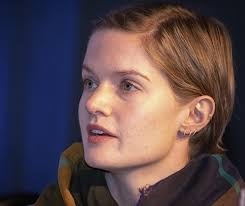
The UC Davis winners are Erin Taylor Kelly of the Geoffrey Attardo lab, Hyoseok Lee of the Christian Nansen lab, Jill Oberski of the Phil Ward lab, Lacie Newton of the Jason Bond lab, and Clara Stuligross of the Neal Williams lab.
- Kelly won first place for her poster, “Metabolic Snapshot: Using Metabolomics to Compare Near-Wild and Colonized Aedes aegypti,” in the Physiology, Biochemistry and Ecology Section.
- Lee won first place for his entry, “Predicting Spring Migration of Beet Leafhoppers, Circulifer tenellus (Hemiptera: Cicadellidae) from Natural Overwintering Sites into Tomato fields in California" in the Graduate 10-Minute Papers category of the Plant-Insect Ecosystems, Behavioral Ecology Section
- Oberski won first place for her entry, “Why Do Museum Collections Matter?” in the Graduate Infographics category, Systematics, Evolution and Biodiversity Section.
- Newton won second place for her entry, “Integrative Species Delimitation Reveals Cryptic Diversity in the Southern Appalachian Antrodiaetus unicolor (Araneae: Antrodiaetidae) Species Complex,” in the Graduate 10-Minute Papers category in the Systematics, Evolution and Biodiversity Section, Genomics.
- Stuligross won second place for her entry, "Larval Pesticide Exposure Reduces Adult Wild Bee Reproduction,” in the Graduate 10-Minute Papers category in the Plant-Insect Ecosystems, Pollinators 2 Section.
The first-place winners received a $75 cash prize, a one-year membership in ESA and a certificate, while the second-place winners won a year's membership and a certificate.
One that is drawing a lot of attention--and rightfully so--is the Oberski poster, "Why Do Museum Collections Matter?" (See below.) The Bohart Museum of Entomology, part of the UC Davis Department of Entomology and Nematology, is one of the many outstanding insect museums in the world. Directed by Lynn Kimsey, UC Davis professor and former department chair, the Bohart houses a global collection of nearly eight million insect specimens.
As Oberski writes: "Cabinets of curiosity and natural history museums are the original basis of our knowledge of global biodiversity. Such collections, however, are more than just well-organized dead organisms. Museums are enormous libraries of identified species, localities, and dates, constantly updated and reorganized based on the best new information. These data inform countless fields of research, and can even answer future questions no one has yet thought to ask. Most importantly, they preserve irreplaceable type specimens, which are a crucial part of species description. Now that many of these insect collections are being digitized and accessed from around the globe, why is it necessary to maintain them as physical materials? While many datasets do lend themselves well to digitization, insect specimens experience significant data loss. Most commonly, photographs are taken of the specimens, but photos are usually inadequate for discerning taxonomic features. Even high-resolution 3D scans are no substitute for direct observations. Finally, museums are centers of education and public outreach. Through collections, biology students and communities can physically experience global insect biodiversity they might not otherwise see, regardless of location or mobility. The “wow” factor of magnificent specimens is most powerful in person. As our lives become increasingly computer-oriented, we must recognize that to enjoy and study nature, no digital replacement will suffice."
Oberski, who joined the Ward lab in 2017, holds a bachelor of arts degree, cum laude, from Macalester College, St. Paul, Minn., where she majored in biology and German studies.
The Entomological Society of America, headquartered in Annapolis, Md., and founded in 1889, is the largest organization in the world serving the professional and scientific needs of entomologists and people in related disciplines. They include educators, extension personnel, consultants, students, researchers, and scientists from agricultural departments, health agencies, private industries, colleges and universities, and state and federal governments. It is a scientific and educational resource for all insect-related topics. For more information, visit www.entsoc.org.
(See in-depth piece on the four other UC Davis recipients on the UC Davis Department of Entomology and Nematology website)
Attached Images:
